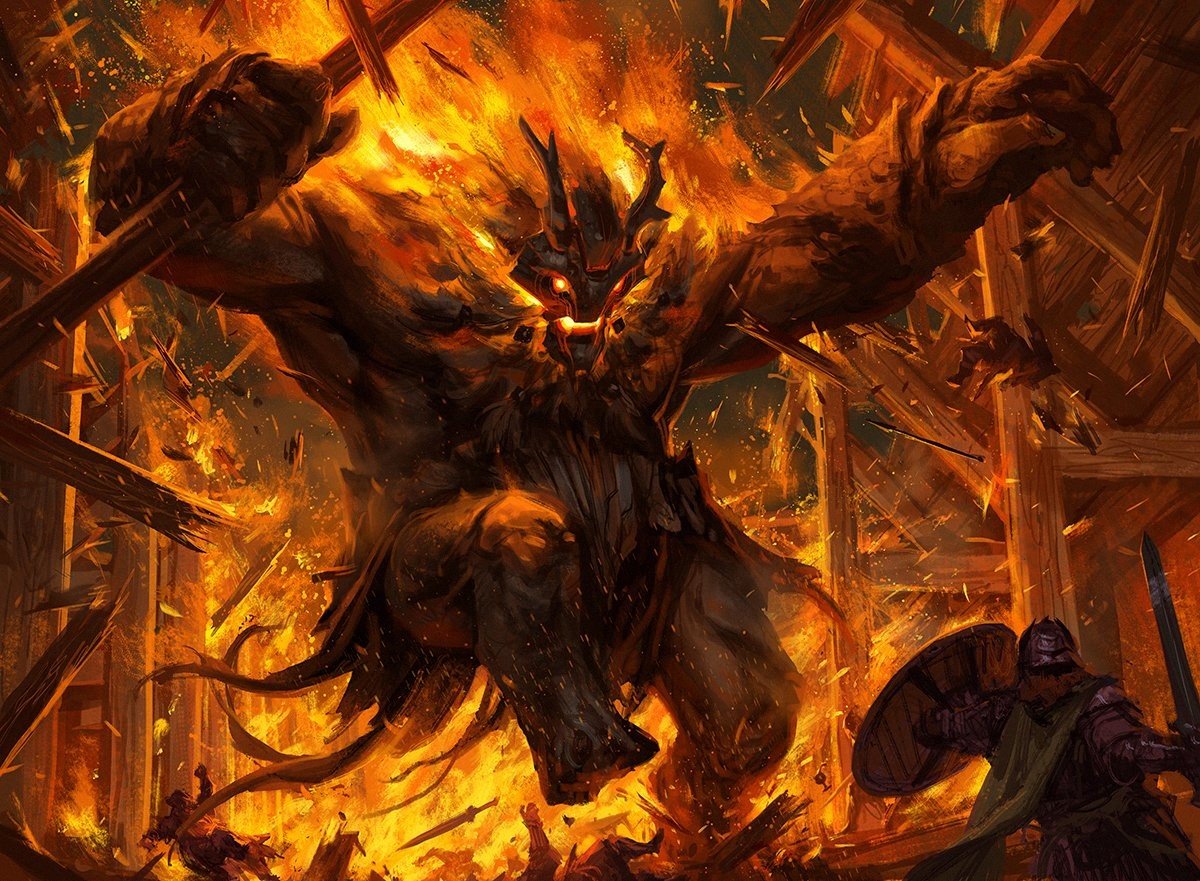Ember of the Fire Giant 5e
Published on August 1, 2023, Last modified on September 28th, 2023
Set your enemies alight with the giant-fuelled fire power!

Andrew Mar - Wizards of the Coast - Fire GIant’s Fury
What Is Ember of the Fire Giant 5e?
Ember of the Fire Giant is a feat introduced in Bigby Presents: Glory of the Giants that provides martials with an area-of-effect (AoE) attack and debuff.
There are a cycle of 6 feats included in this book, each of which are thematic to a sub-type of giants. Ember of the Fire Giants allows players to channel the fire giant’s durability and skill in combat.
How Does Ember of the Fire Giant Work?
Like all of the 4th-level Bigby feats, Ember of the Fire Giant provides an Ability Score Increase (ASI) to one of three thematic choices based on the giant type this feat stems from. In this case, you can choose to increase your Strength, Constitution, or Wisdom by 1.
You also get access to fire resistance, which is a huge defensive boost considering how prevalent fire damage is amongst monsters and spells.
Finally, you get access to an attack variant that allows you to deal 1d8 + prof. bonus damage in a 15-foot radius centred on you. This ability targets Dexterity saving throws and also blinds targets if they fail.
Prerequisites
While this may seem extremely powerful compared to previous feats, this feat does require some investment. Not only is it reserved for 4th-level and above characters, but it also requires that you take the Strike of the Giant (Fire Strike) feat before you gain access to this one. The concept of locking feats behind prerequisites first appeared in Dragonlance: Shadow of the Dragon Queen, but it appears this is the direction D&D will head in new 5e materials and the 2024 Player’s Handbook.
Is Ember of the Fire Giant Good?
In our 5e Feats Tier List, Ember of the Fire Giant was given an A Tier rating, making it an excellent pickup for specific classes.
Even with the prerequisites, Ember of the Fire Giant is a solid ability for pretty much any martial build. While it doesn’t output damage on par with a heavy weapon (like a greatsword or maul), the AoE, defensive boost, and debuff provided by this ability are outstanding value. On top of this, this is a half-feat, meaning that you still get to increase important ability scores, ensuring you don’t fall too far behind in your stat progression.
Another thing to note is activating Ember of the Fire Giant doesn’t take an action or bonus action, you can simply replace an attack with it. This adds to it’s effectiveness for just about any build.
We can see that there has definitely been some power creep in feats by comparing it to Infernal Constitution from Xanathar’s Guide to Everything, which was a half-feat that also provided a resistance. Here’s the differences:
- Ember of the Fire Giant gives +1 to Strength, Constitution, or Wisdom. Infernal Constitution only gives it to Constitution.
- Ember of the Fire Giant gives resistance to fire. Infernal Constitution gives it to cold and poison.
- Ember of the Fire Giant provides a hugely useful AoE combat ability. Infernal Constitution only gives advantage against being poisoned.
So, while they’re quite similar, Ember of the Fire Giant’s AoE ability is really what signals the power creep. The fact that Infernal Constitution gives 2 damage resistances and Ember of the Fire Giant only gives one is a good indicator that the power creep isn’t too substantial.
